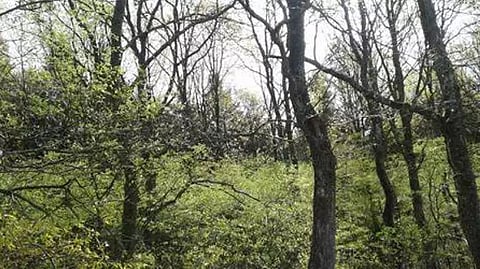
- Home
- Live Blog
- Breaking News
- Top Headlines
- Cities
- NE News
- Sentinel Media
- Sports
- Education
- Jobs

STAFF REPORTER
GUWAHATI: Assam is losing canopy cover at an alarming rate from 2001-2020 due to massive deforestation.
According to the satellite data analysed by researchers of the University of Maryland, Karbi Anglong tops the list with 97.4 Kha (kilo hectares) loss of green cover, followed by Dima Hasao with 63.2 Kha, Sonitpur 17.4 Kha, Tinsukia 13.2 Kha and Kokrajhar with 10.4 Kha.
In 2010, Assam had 2.42 Mha (million hectares) of natural forest, extending over 33 per cent of its land area. In 2020, it lost 17.8 Kha of natural forest, equivalent to 8.04 MT (metric tonnes) of carbon emissions.
From 2001 to 2020, the State lost 269 Kha of tree cover, equivalent to a 9.8 per cent decrease in tree cover since 2000, and 119 MT of carbon emissions.
Notably, in 2011, the state had 37.27 per cent forest cover as against the national average of 23.4 per cent, states a report of FSI (Forest Survey of India).
On the brighter side, the Goalpara district has been leading the places that recorded the maximum increase in forest cover since 2017 with a quantum rise of 97.74 per cent. This was followed by 44.47 per cent in Kamrup and Karimganj where the forest cover rose by 35.43 per cent each.
In 2010, Goalpara had 19.8 Kha of natural forest, indicating an increase of over 10 per cent of its land area. In 2020, it lost 16.8 ha of natural forest, equivalent to 7.49 kt of carbon dioxide of emissions.
In 2010, Assam had 2.42 Mha of natural forest spread over 33 per cent of its land area. In 2020, it lost 17.8 Kha of natural forest, equivalent to 8.04 MT of carbon dioxide emissions.
From 2001 to 2020, Assam lost 269 Kha of tree cover, equivalent to a 9.8 per cent decrease in tree cover since 2000, and 119 MT of carbon dioxide emissions.
The canopy cover in the state is now alarming. Karbi Anglong had the most tree cover loss at 97.4 Kha compared to an average of 9.94 Kha. From 2001 to 2020, Karbi Anglong lost 97.4 Kha of tree cover, equivalent to a 12 per cent decrease in tree cover since 2000, and 44.1 MT of carbon dioxide emissions.
In 2010, Karbi Anglong had 760 Kha of natural forest, extending over 73 per cent of its land area. In 2020, it lost 7.56 Kha of natural forest, equivalent to 3.43 MT of carbon dioxide emissions.
From 2002 to 2020, Karbi Anglong lost 26.3 Kha of humid primary forest, making up 28 per cent of its total tree cover loss in the same period. The total area of humid primary forest in Karbi Anglong decreased by 9.2 per cent in this period.
From 2001 to 2012, Karbi Anglong gained 6.96 Kha of tree cover region-wide equal to 23 per cent of all tree cover gain in Assam.
Forest in Dima Hasao district emitted 1.31 MT of carbon dioxide per year between 2001 and 2020 and removed -708 kt carbon dioxide per year. This represents a net carbon flux of 597 kt carbon dioxide per year.
Between 2001 and 2020, an average of 1.31 MT per year was released into the atmosphere as a result of tree cover loss in Dima Hasao. In total, 26.1 MT of carbon dioxide was emitted in this period.
In 2000, Dima Hasao had an aboveground live woody biomass density of 214 t/ha and total aboveground biomass of 92.9 MT.
In 2010, Kamrup had 86.4 Kha of natural forest, extending over 28 per cent of its land area. In 2020, it lost 374 ha of natural forest, equivalent to 160 kt of carbon dioxide emissions.
From 2002 to 2020, Kamrup lost 708 ha of humid primary forest, making up 15 per cent of its total tree cover loss in the same period. The total area of humid primary forest in Kamrup decreased by 3.7 per cent in this period.
In 2010, Kamrup Metropolitan had 22.5 Kha of natural forest, extending over 29 per cent of its land area. In 2020, it lost 67.1 ha of natural forest, equivalent to 24.8 kt of carbon dioxide emissions.
From 2002 to 2020, Kamrup Metropolitan lost 17 ha of humid primary forest, making up 1.7 per cent of its total tree cover loss in the same period. The total area of humid primary forest in Kamrup Metropolitan decreased by 1.2 per cent in this period.
Between 2001 and 2020, forests in Kamrup Metropolitan emitted 21.4 kt carbon dioxide per year and removed -54.2 kt carbon dioxide per year. This represents a net carbon flux of -32.7kt carbon dioxide per year.
Also Watch: